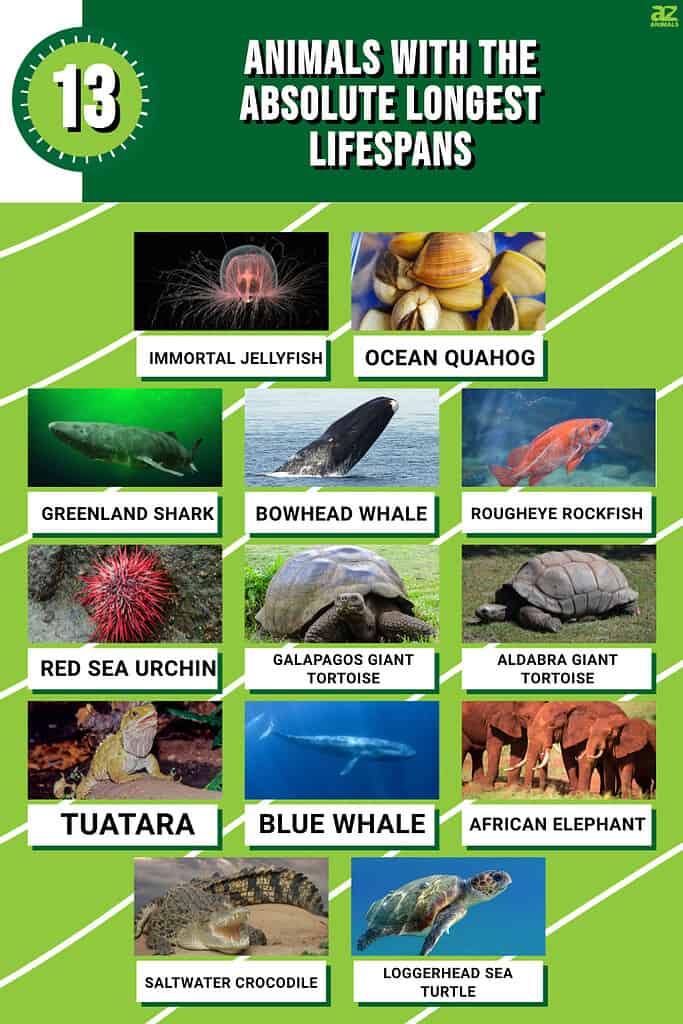
There are millions of different species in the world, ranging from tiny insects to huge whales, so it’s not surprising that there are some animals that live much longer than others. The idea of an animal that can live forever might seem pretty unbelievable, but it’s actually true! Although this unusual creature is the only one that can achieve this, there are still plenty of animals that have impressively long lifespans. So, keep reading to discover the animals with the longest lifespans in the world!
13. Loggerhead Sea Turtle — 67 Years
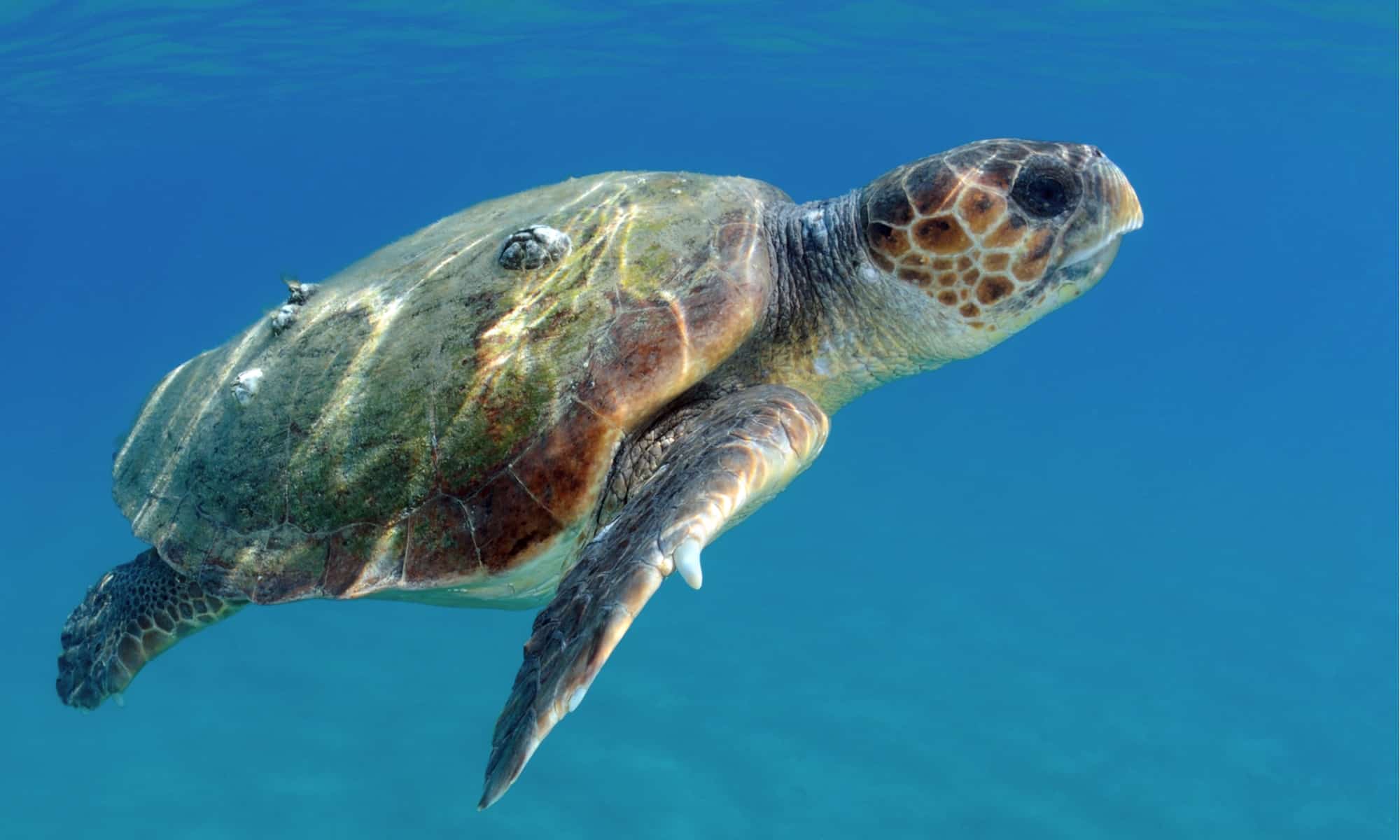
Loggerhead sea turtles can live for 67 years but are considered to be a vulnerable species.
©Matteo photos/Shutterstock.com
The first animal on the list is the loggerhead sea turtle, which has a lifespan of up to 67 years. Loggerhead sea turtles can usually reach lengths of up to 3.5 feet, although longer individuals are not entirely unknown. Loggerhead sea turtles have a broad range and can be found in the Atlantic, Indian, and Pacific oceans in tropical and subtropical regions, as well as in the Mediterranean Sea. They are considered to be a vulnerable species, and threats include the loss of suitable nesting habitats as well as predators of the eggs and juveniles.
12. Saltwater Crocodile — 70 Years
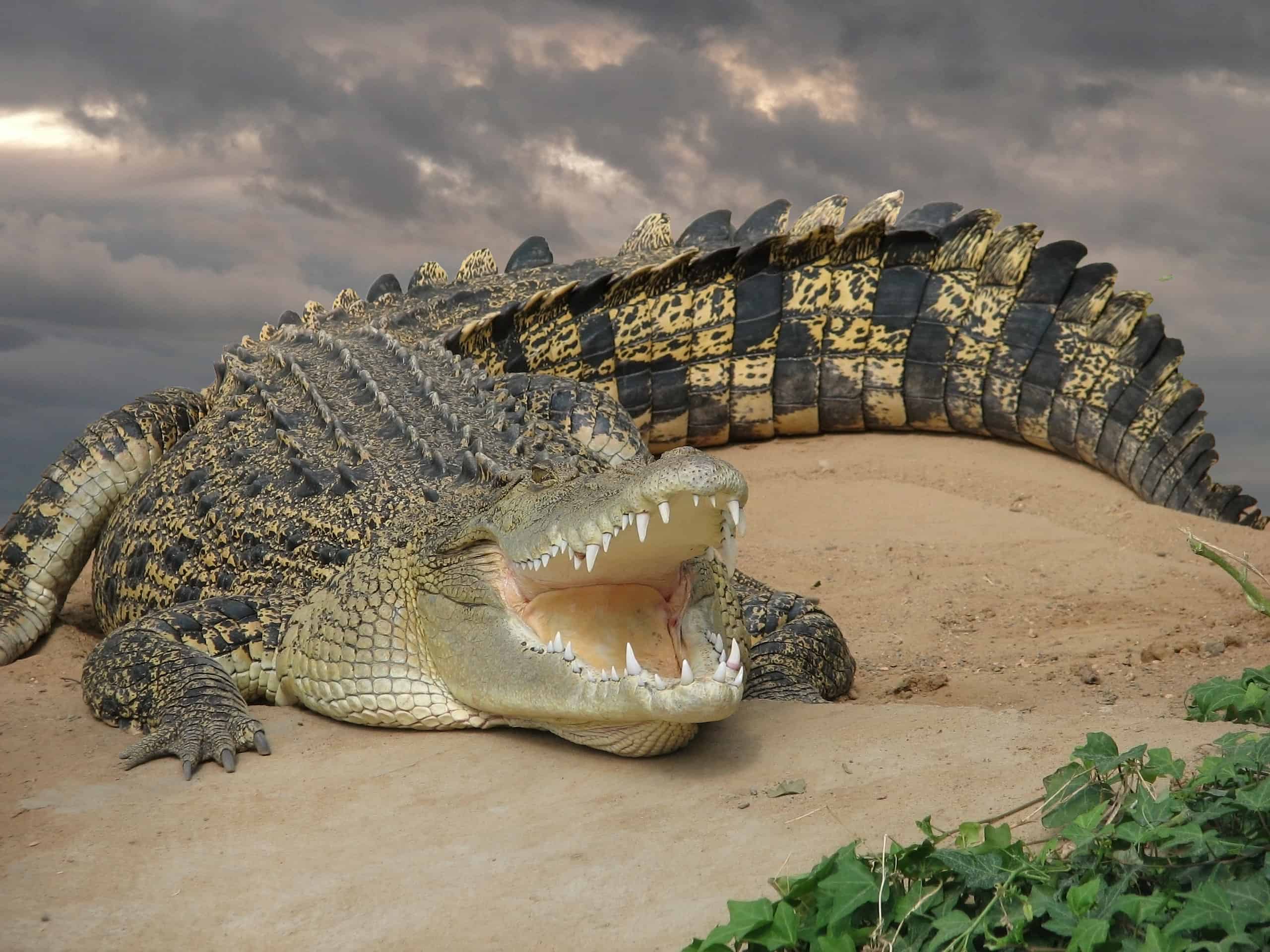
Saltwater crocodiles are apex predators and have the strongest bite force in the world.
©Susan Flashman/Shutterstock.com
The next animal is the saltwater crocodile with a lifespan of 70 years. Saltwater crocodiles, or “salties”, can reach 20 feet long and are fierce apex predators. They have the strongest bite force of any animal and have a very broad diet, preying on anything that they can catch. Saltwater crocodiles live in Australia, India, and Southeast Asia, where they inhabit brackish rivers and swamps, as well as some freshwater rivers.
11. African Elephant — 70 Years
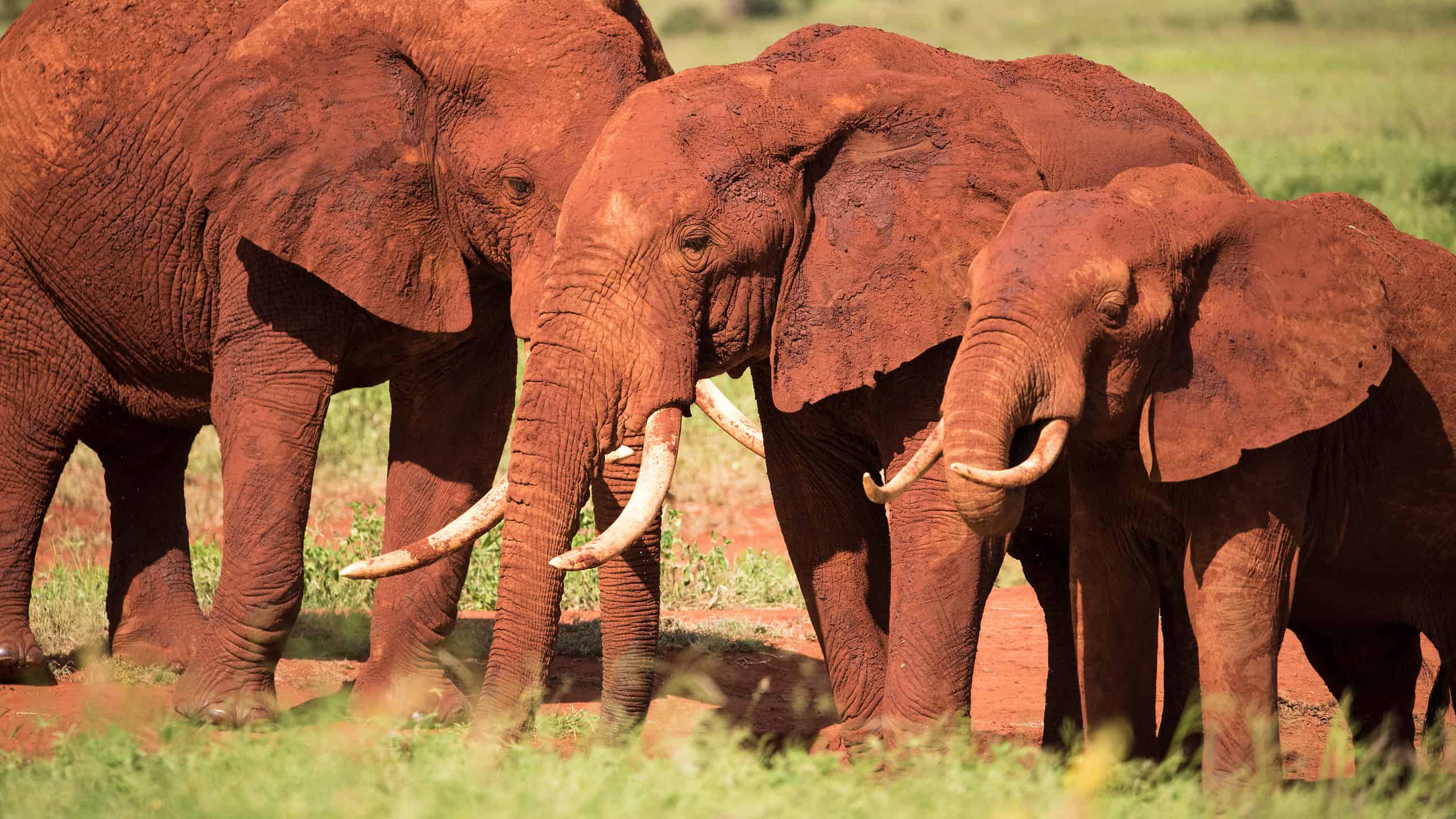
African elephants can live for up to 70 years and herds are typically led by the oldest female.
©Prasanth Aravindakshan/Shutterstock.com
The land mammal with the longest lifespan is the African elephant, which lives for approximately 70 years. There are two species — the African bush elephant and the African forest elephant — with the bush elephant being the larger of the two.
African bush elephants can reach 13 feet high at the shoulder and weigh more than 10 tons, although males are typically larger than females. The tusks of African elephants typically reach five to eight feet long and can grow at a rate of several inches per year.
Elephants are matriarchal, and herds of females and calves are usually led by the oldest female. Herds can consist of anything between 10 and 50 animals. However, male elephants are usually solitary or may form smaller “bachelor herds”.
10. Blue Whale — 90 Years
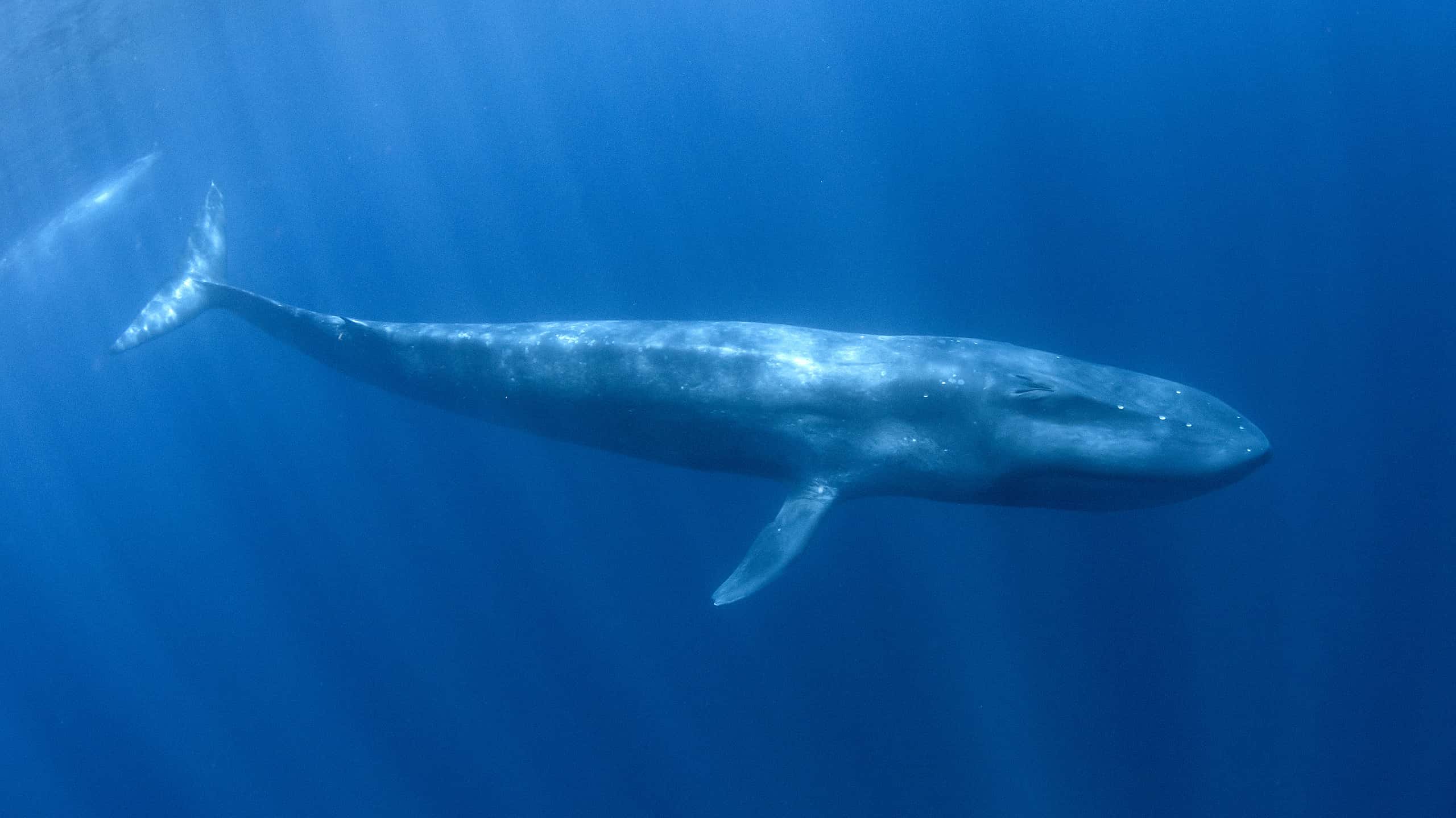
Blue whales are the largest animals in the world.
©Rich Carey/Shutterstock.com
The largest whale — and the largest animal in the world today — is the blue whale, which reaches a staggering 100 feet long. These huge baleen whales live in most oceans, with the exception of the Arctic, and have a lifespan of up to 90 years. Blue whales are an endangered species, and right now their main threats are collisions with boats and becoming entangled in fishing nets. However, they were once hunted almost to extinction. As baleen whales, they eat large amounts of krill, which they capture by swimming into the krill cloud and then filtering the water back out of their mouth.
9. Tuatara — 100 Years
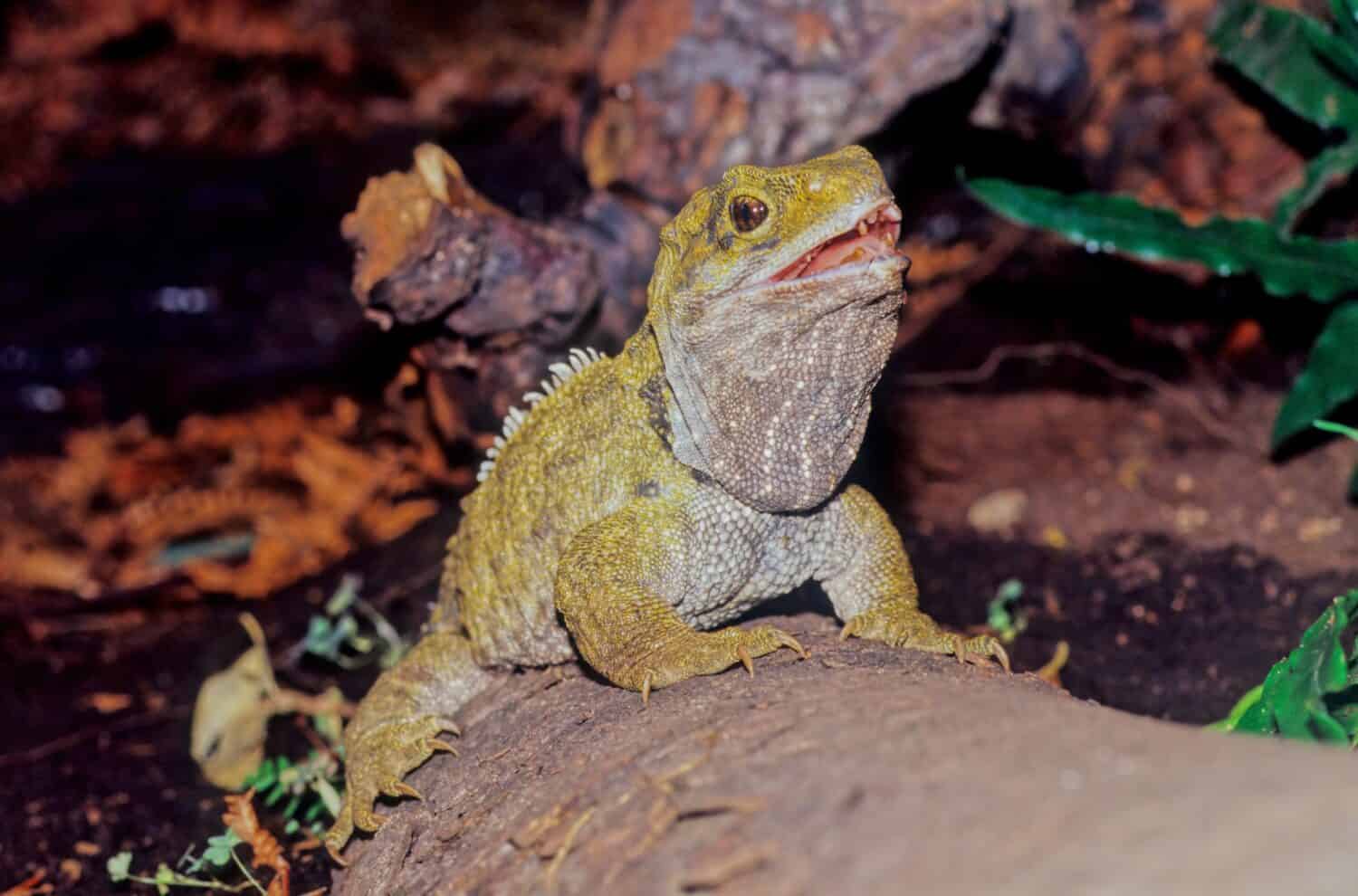
Tuataras can live for 100 years but they are members of an order that has been around for more than 200 million years.
©Roberto Dani/Shutterstock.com
Also making the list of animals with the longest lifespans is the tuatara, which can reach 100 years old. Tuataras are often regarded as “living fossils” as they are the only surviving members of an order of reptiles that have existed for more than 200 million years.
Tuataras are endemic to New Zealand and are the largest reptiles in the country, with adult males attaining lengths of around 18 inches. They are typically greenish or brownish in color, although this can change during their lifetime. They also have spines down their backs, although these are more prominent in males. Tuataras eat a variety of insects, birds, and lizards. However, they are preyed upon by rats and large birds of prey.
8. Aldabra Giant Tortoise — 150 Years

Aldabra giant tortoises are endemic to the Seychelles.
©NasserHalaweh, CC BY-SA 4.0, via Wikimedia Commons - License
The first of two tortoises with long lifespans is the Aldabra giant tortoise, which lives for up to 150 years. Aldabra giant tortoises are endemic to Aldabra Atoll in the Seychelles, where they inhabit scrubland and sand dunes. They have a dome-shaped shell and average four feet long while weighing up to 550 pounds.
Aldabra giant tortoises eat a variety of leaves, grass, and fruit. They lay up to 25 eggs per clutch, which are deposited in a nest that’s around one foot deep. The juveniles are approximately six inches long when they hatch.
7. Galapagos Giant Tortoise — 150 Years
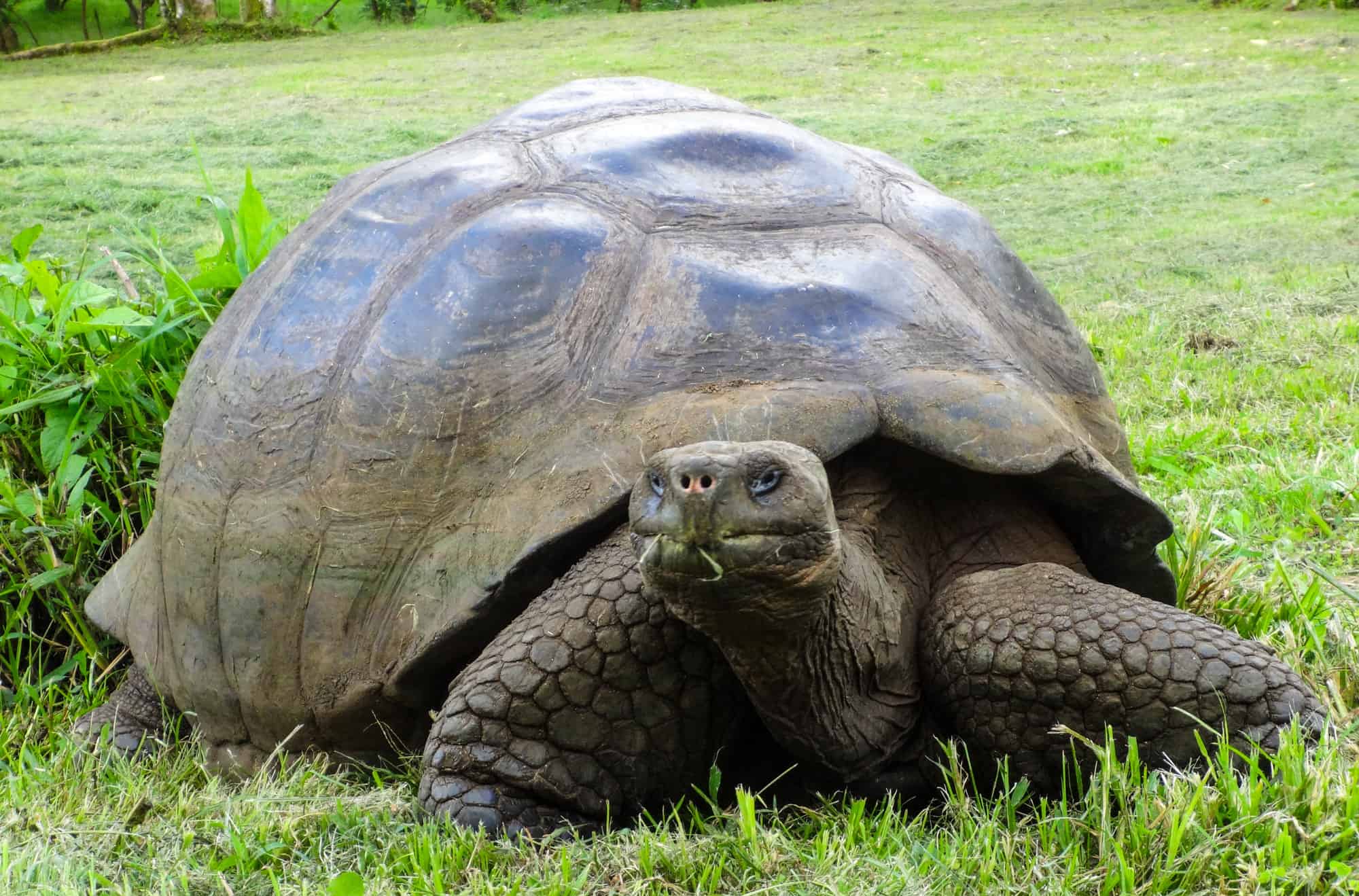
Galapagos giant tortoises are native to the Galápagos Islands and can live for up to 150 years.
©iStock.com/Lisa Seeto
Also with a lifespan of 150 years is the Galapagos giant tortoise, which is also considered to be the largest living species of tortoise in the world. They are native to the Galápagos Islands and typically live in lowland regions where they eat a variety of cactus, flowers, grasses, and fruit.
Galapagos giant tortoises can reach six feet long and can weigh more than 400 pounds. They have two main shell shapes — domed and saddleback. Saddleback shells rise upwards at the front to create a saddle shape, while domed shells are a typical dome shape.
6. Red Sea Urchin — 200 Years
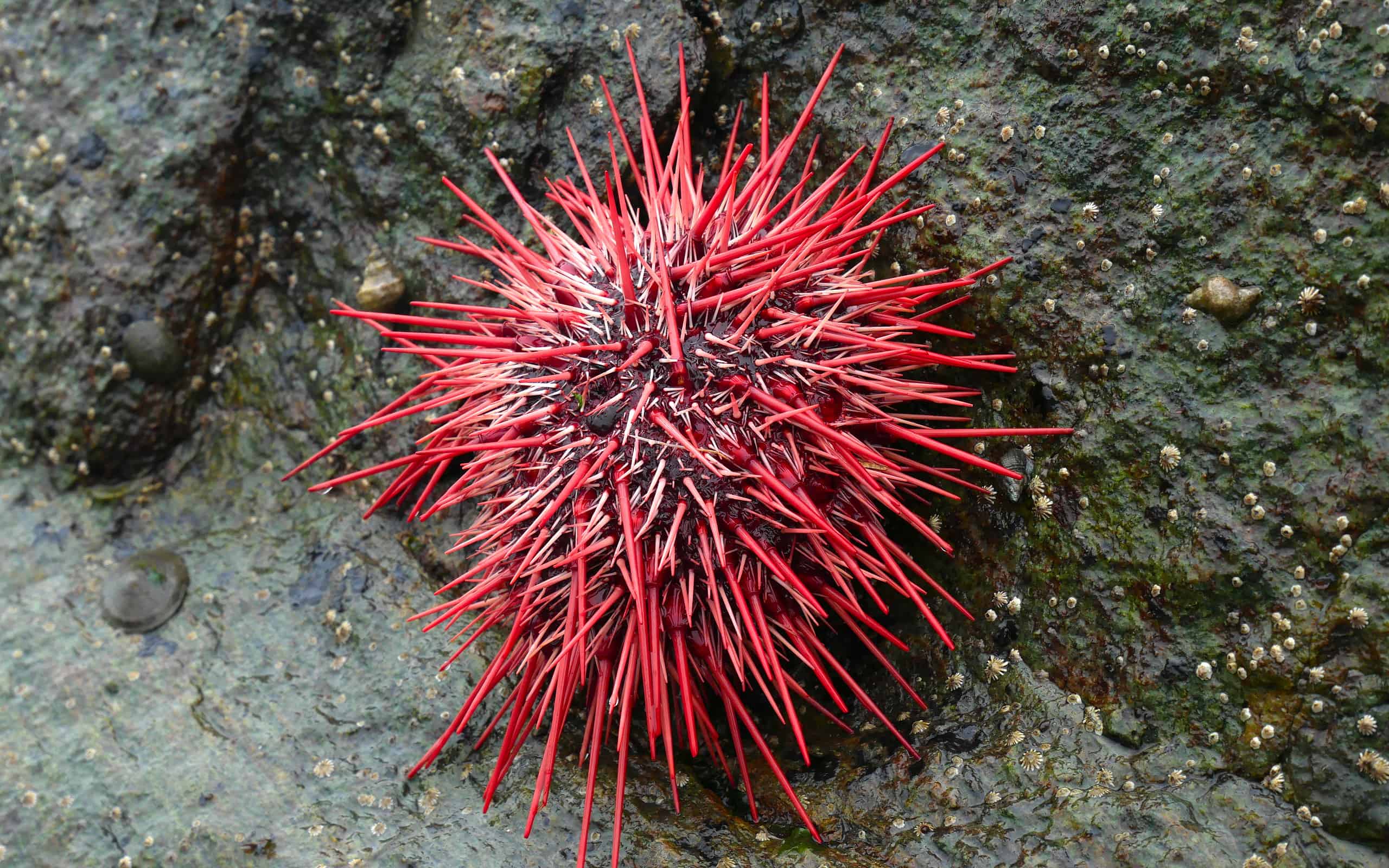
Red sea urchins live for around 200 years.
©Extemporalist, CC0, via Wikimedia Commons - License
Making the list with a lifespan of 200 years is the red sea urchin, which lives around the coast of the Pacific Ocean between Alaska and Baja California. Red sea urchins are around seven inches wide and are covered with spines that are approximately three inches long.
5. Rougheye Rockfish — 200 Years
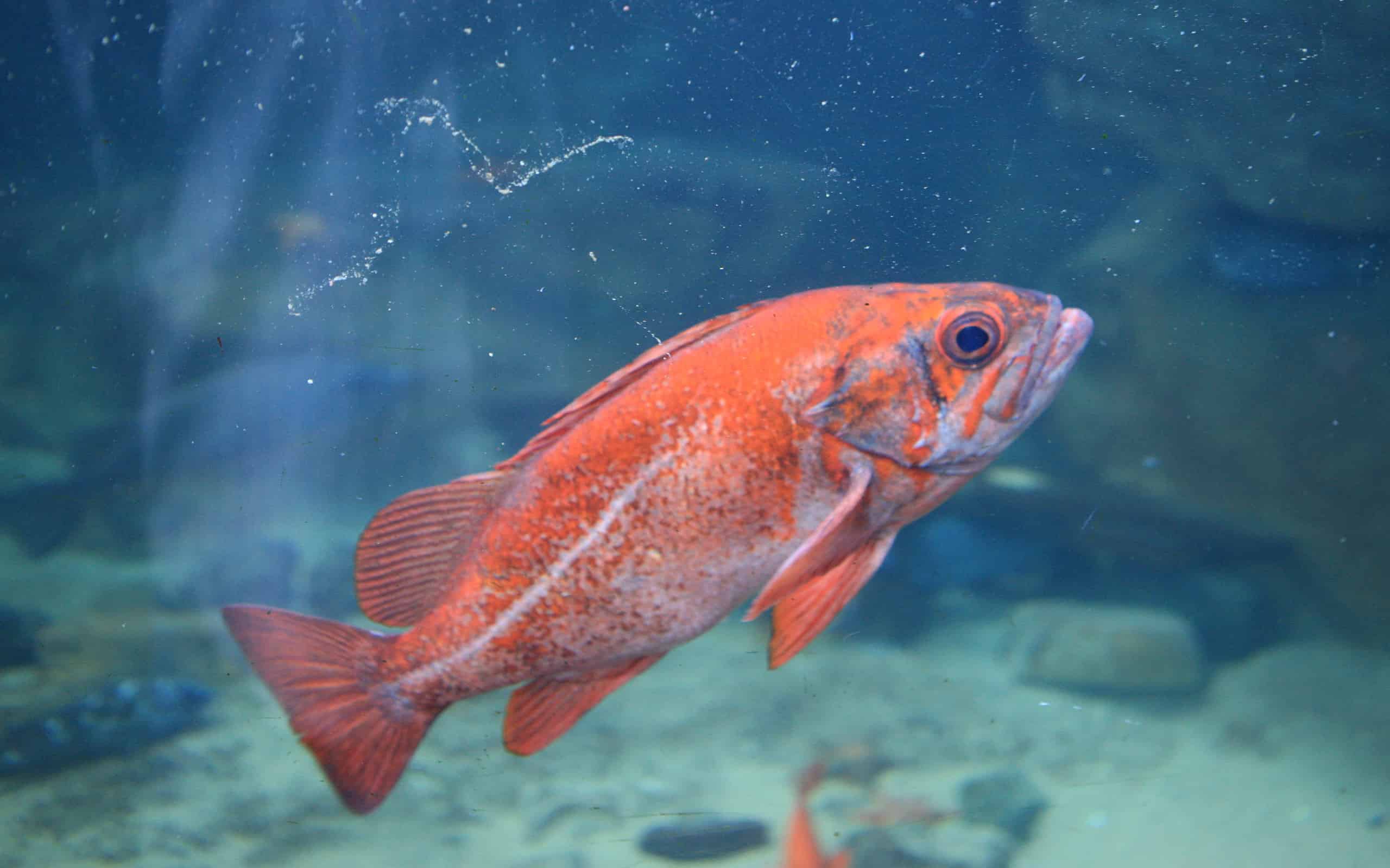
Rougheye rockfish can live for up to 200 years.
©Cliff from Arlington, Virginia, USA, CC BY 2.0, via Wikimedia Commons - License
The next animal on the list is the rougheye rockfish, which can live for up to 200 years. Rougheye rockfish inhabit the North Pacific at depths between 495 and 1,485 feet. They typically live near the seabed, around rocks and crevices.
Rougheye rockfish are around 31 inches long and are usually pink or tan with a darker patch on their operculum. They also have several spines on their lower eyelids. Rougheye rockfish prey on a variety of smaller fish, as well as shrimp and crabs.
4. Bowhead Whale — 200 Years

Bowhead whales have huge skulls that they use to break through thick ice.
©Bering Land Bridge National Preserve, CC BY-SA 2.0, via Wikimedia Commons - License
The animal with the fourth-longest lifespan in the world and the longest-living mammal is the bowhead whale. They live for approximately 200 years, and scientists even discovered a 130-year-old harpoon tip in one bowhead whale, which supports this estimation of their lifespan.
Bowhead whales are baleen whales, and they live in the cold Arctic and subarctic waters. They have a distinctive bow-shaped head, which they use to break through the thick layers of ice so they can reach the surface to breathe. They can reach 60 feet long and have baleen plates that are around 10 feet long.
3. Greenland Shark — 250 to 400 Years
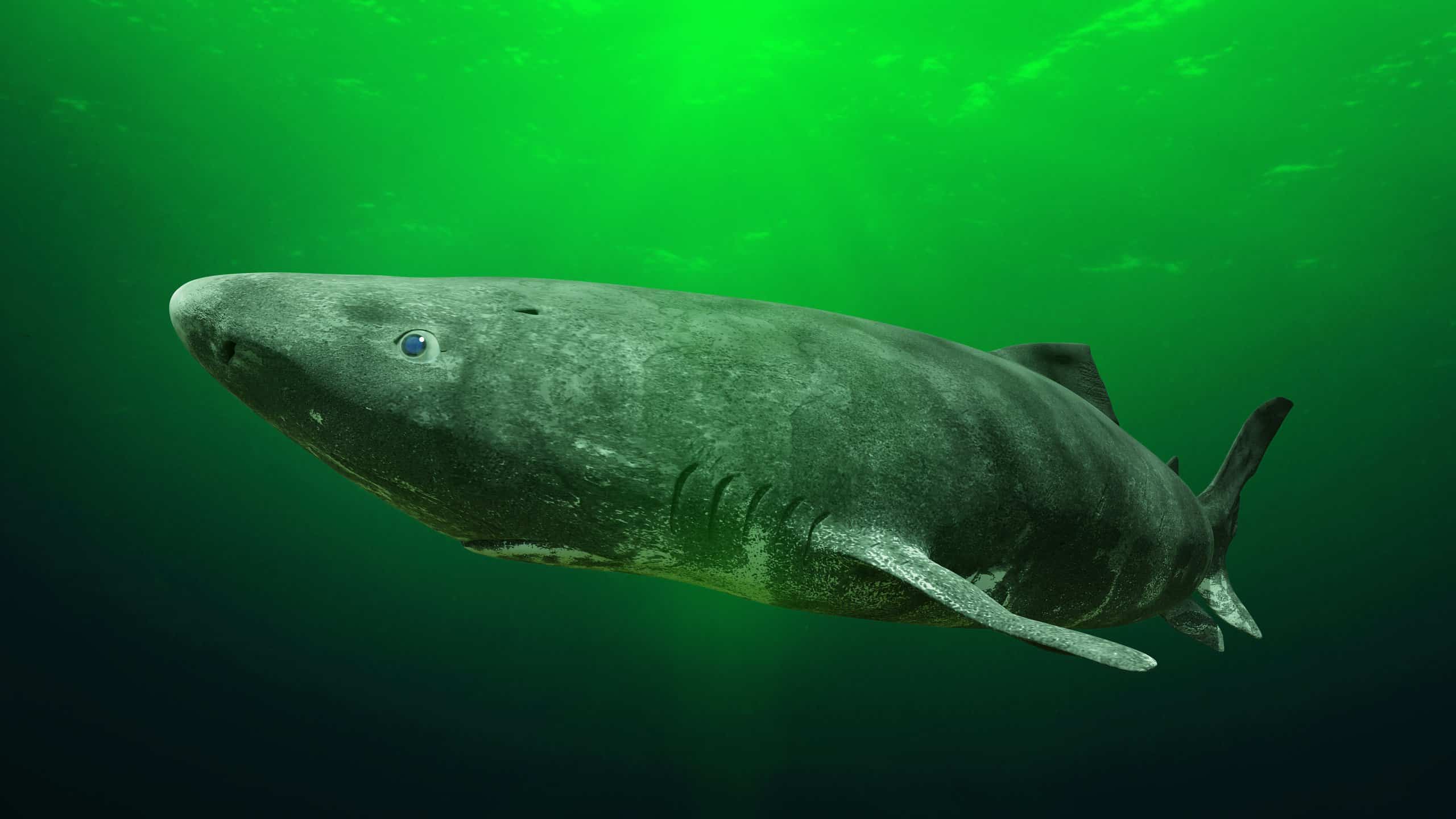
Greenland sharks can live for up to 400 years.
©iStock.com/dottedhippo
The oldest shark in the world is undoubtedly the Greenland shark, which has an incredible lifespan of between 250 and 400 years. Greenland sharks inhabit the Arctic and North Atlantic oceans, where they are apex predators. Incredibly, they even sometimes consume moose, which they catch while the moose are swimming between islands close to the shore.
Greenland sharks are one of the largest species of sharks, attaining lengths of up to 23 feet. They have stocky bodies with a blunt, rounded snout. They also have particularly small pectoral and dorsal fins. Greenland sharks have a slow growth rate and don’t even reach sexual maturity until they are more than 100 years old.
2. Ocean Quahog — 500 Years
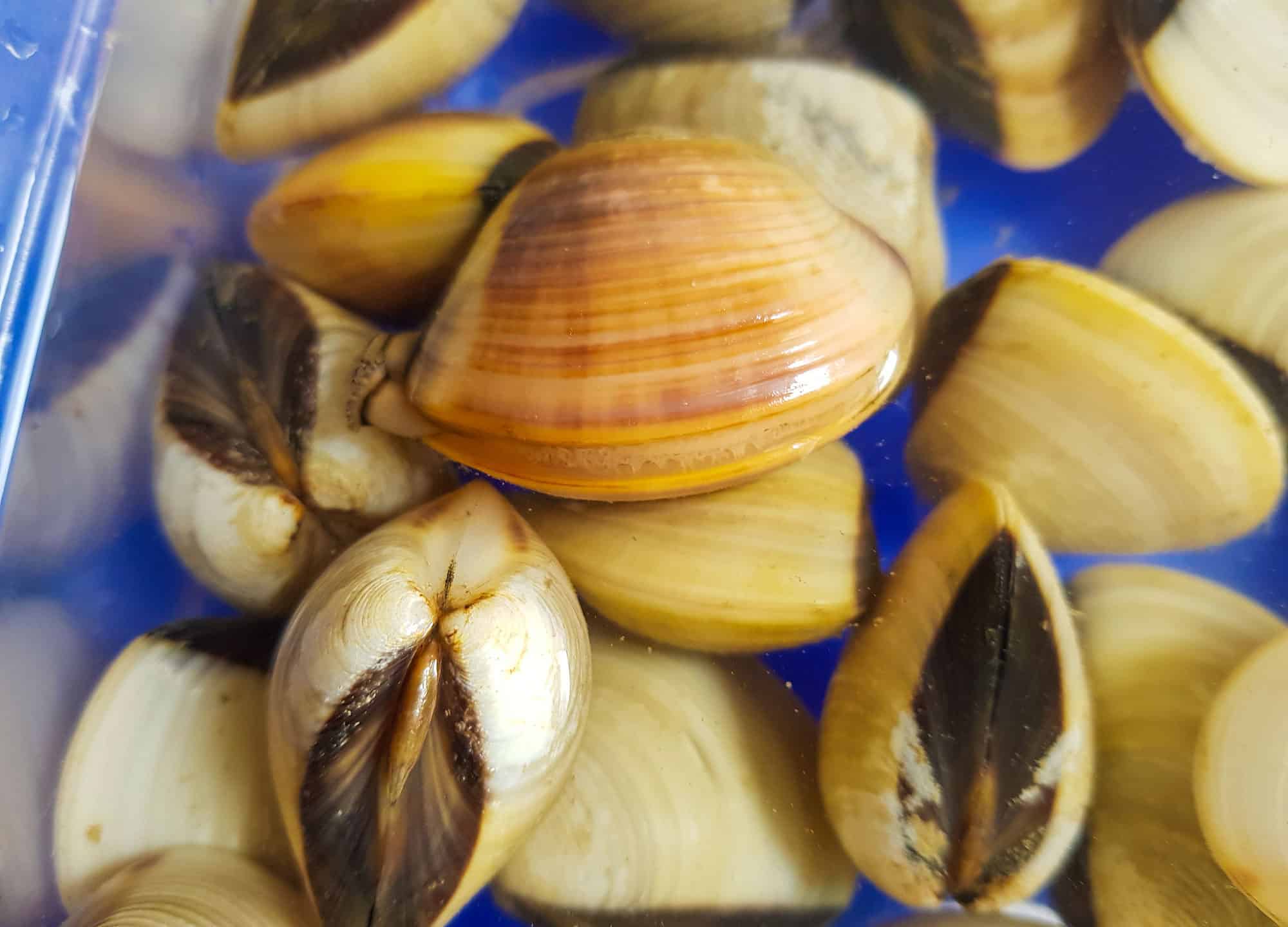
Ocean quahogs are clams that can live for 500 years.
©Lam Van Linh/Shutterstock.com
Coming in at the second position is the ocean quahog with a lifespan of around 500 years. Ocean quahogs are clams that are native to the Atlantic Ocean. They are typically round and can reach two inches high. Ocean quahogs have an incredibly slow growth rate, which aids their longevity.
1. Immortal Jellyfish — Forever
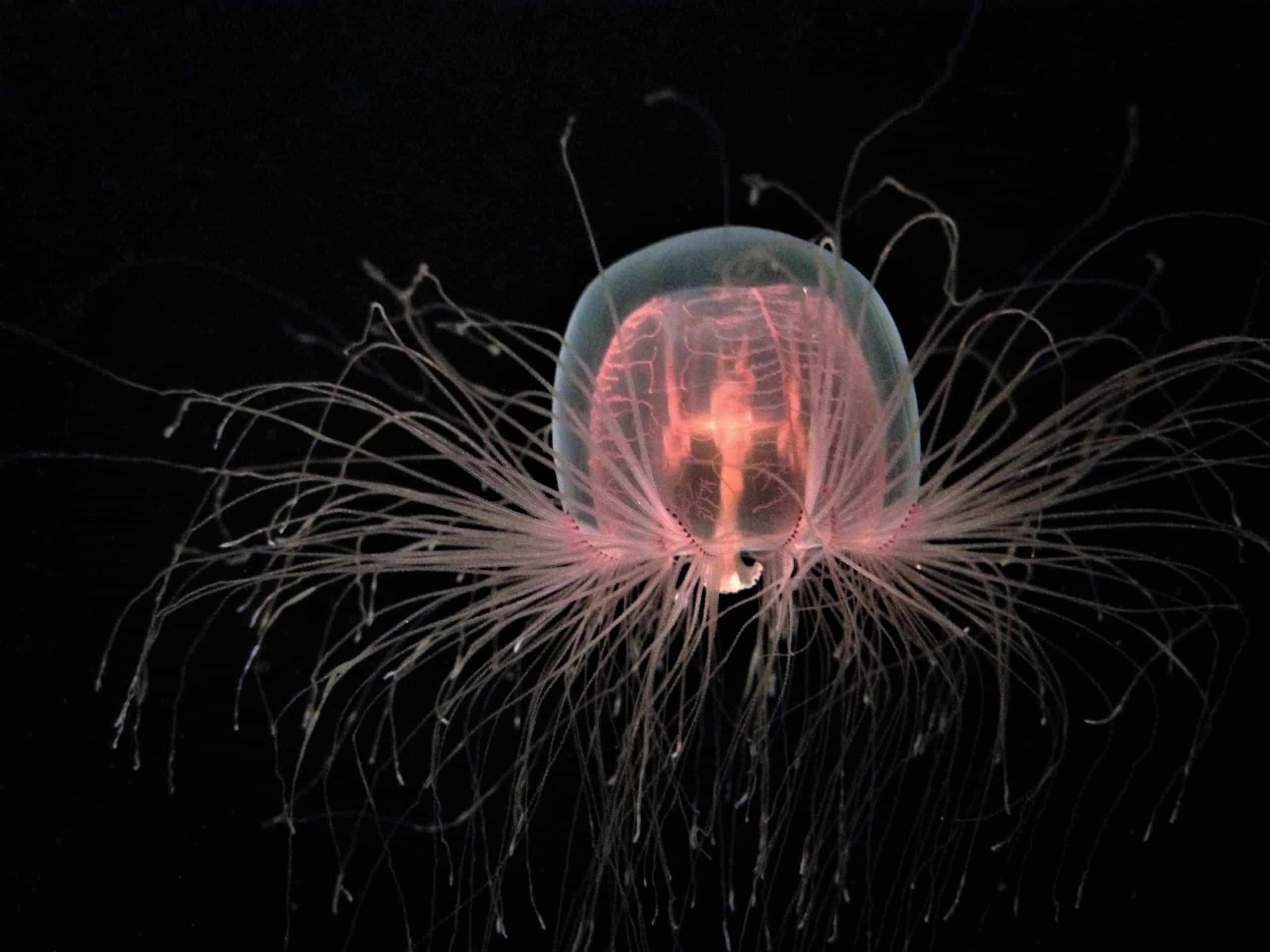
Immortal
jellyfish
can technically live forever due to their ability to regenerate themselves.
©Rebecca Schreiner/Shutterstock.com
The animal with the longest lifespan in the world is the immortal jellyfish, because of its ability to regenerate itself. Immortal jellyfish are tiny, bell-shaped organisms that are only around 0.18 inches long. They occur in oceans all over the world in temperate to tropical waters and eat a variety of plankton, larvae, and fish eggs.
Immortal jellyfish regenerate themselves because when the adult jellyfish is injured it shrinks in on itself and then returns to its previous life stage (a polyp) over the next 24 to 36 hours. It then matures back into an adult. However, despite their immortal status, immortal jellyfish are still preyed upon by a wide variety of other animals.
Summary of the Top 13 Animals with the Absolute Longest Lifespans
| Number | Animal | Age in Years |
|---|---|---|
| 1 | Immortal Jellyfish | Forever |
| 2 | Ocean Quahog | 500 |
| 3 | Greenland Shark | 250-400 |
| 4 | Bowhead Whale | 200 |
| 5 | Rougheye Rockfish | 200 |
| 6 | Red Sea Urchin | 200 |
| 7 | Galapagos Giant Tortoise | 150 |
| 8 | Aldabra Giant Tortoise | 150 |
| 9 | Tuatara | 100 |
| 10 | Blue Whale | 90 |
| 11 | African Elephant | 70 |
| 12 | Saltwater Crocodile | 70 |
| 13 | Loggerhead Sea Turtle | 67 |
The photo featured at the top of this post is © adogslifephoto/ via Getty Images
Thank you for reading! Have some feedback for us? Contact the AZ Animals editorial team.






